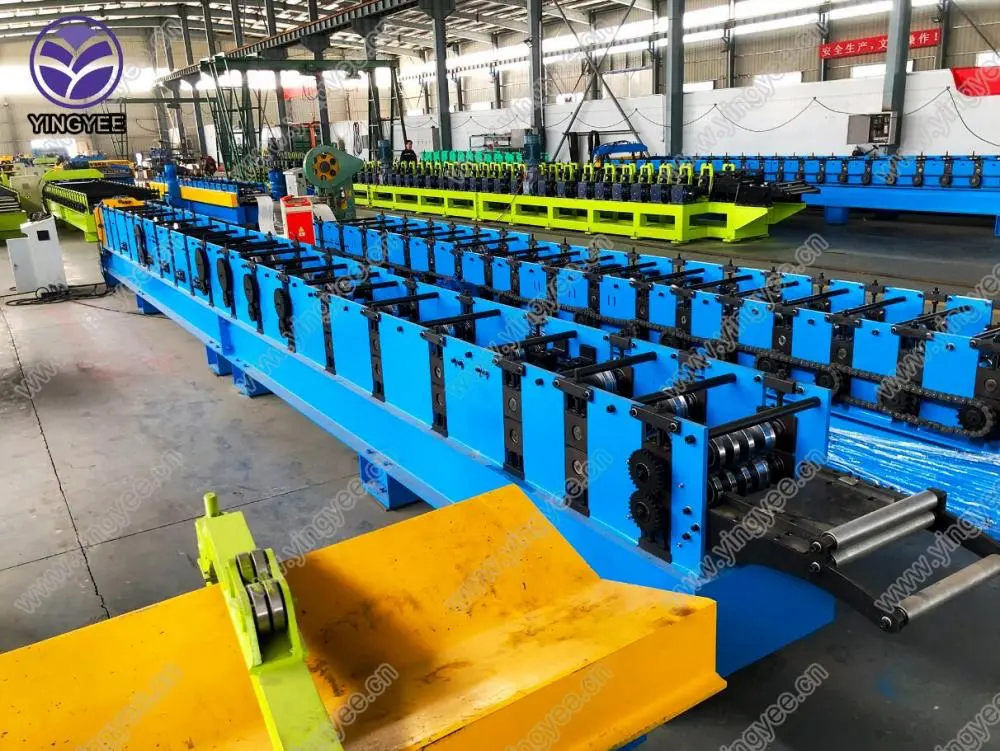
The Significance of Angle Iron Roll Forming Machines in Modern Manufacturing
In the landscape of modern manufacturing, efficiency and precision are paramount. Among the various processes that contribute to the fabrication of steel products, angle iron roll forming has gained prominence due to its versatility and cost-effectiveness. At the heart of this process lies the angle iron roll forming machine—an essential tool for producing high-quality angle iron used in various construction and industrial applications.
Understanding Angle Iron
Angle iron, also known as angle steel, is a type of structural steel that comes in an L shape. This design allows for improved strength and rigidity, making it a preferred choice in construction and fabrication. Angle iron is commonly utilized in structural applications such as beams, frames, brackets, and platforms. Its unique properties make it ideal for various uses; however, the uniformity and precision of its dimensions are critical.
The Role of Angle Iron Roll Forming Machines
Angle iron roll forming machines are designed to continuously shape metal by passing it through a series of rollers. This process not only results in a consistent product but also allows manufacturers to achieve complex profiles with minimal waste. The machines can handle a range of materials, including mild steel, stainless steel, and aluminum, making them incredibly versatile.
A typical roll forming machine for angle iron comprises several key components, including entry guides, roll stands, and an exit section for cutting. The metal stock is fed into the machine, where it is progressively shaped as it passes through multiple sets of rollers. This ensures that the angle iron maintains tight tolerances throughout its length.
Advantages of Using Angle Iron Roll Forming Machines
1. Efficiency One of the most significant advantages of using angle iron roll forming machines is their ability to produce large volumes of angle iron quickly. This high throughput is essential for meeting the demands of high-volume projects, reducing lead times, and increasing overall productivity.

2. Cost-effectiveness Roll forming is an economical process that minimizes material waste by utilizing continuous lengths of metal. This not only optimizes resource utilization but also reduces the cost per unit of production, enabling manufacturers to offer competitive pricing.
3. Consistency and Quality The roll forming process is highly repeatable, resulting in uniform products with consistent dimensions. This is crucial in construction, where structural integrity depends on precise measurements. Quality control can be easily integrated into the process to ensure that the finished products meet industry standards.
4. Customization Modern angle iron roll forming machines can be programmed to produce various profiles and sizes, providing manufacturers with the flexibility to accommodate diverse customer requirements. This adaptability is essential in a competitive market where demand can fluctuate.
5. Reduced Labor Costs Automated roll forming machines require fewer operators compared to traditional fabrication methods. This automation not only reduces labor costs but also minimizes human error, leading to higher quality products.
Applications of Angle Iron
The applications of angle iron are vast and varied, ranging from construction to manufacturing. Angle iron is commonly used in
- Building Frameworks It provides structural support for buildings, ensuring stability and durability. - Bracing Used for reinforcement in walls and equipment, angle iron supports load-bearing structures effectively. - Racking and Shelving Its strength makes it an ideal choice for storage solutions in warehouses and factories. - Transportation Angle iron is also utilized in the manufacturing of trailers, trucks, and other transport equipment.
Conclusion
The angle iron roll forming machine is an indispensable tool in the modern manufacturing landscape. Its capacity to produce high volumes of high-quality angle iron quickly and efficiently positions it at the forefront of metal fabrication technologies. As industries continue to seek more efficient and economical production methods, the role of roll forming machines will undoubtedly grow, paving the way for further innovations in the field. For manufacturers aiming to improve their operations and meet the evolving needs of their clients, investing in an angle iron roll forming machine is a strategic decision that promises significant returns.